Anyone who’s familiar with running a sling setup on their AR-15 is well aware of the advantages of having one. For those who don’t run one or simply haven’t tried them out yet, it’s worth considering adding one to your kit.
Slings do more than just allow to you to stow your rifle on your shoulder. Properly mounted slings disperse the weight of your rifle and provide you with quick access to your rifle when transitioning from your pistol or when engaging a target. In many ways, slings serve a similar purpose to a pistol holster. Whether it’s for duty, competition, or recreational training, a sling provides accessibility and retention when you need it most.
No matter what your rifle’s purpose is, a good sling goes a long way. Follow along as we break down the importance of slings, and the different ways you can attach one on your AR-15.
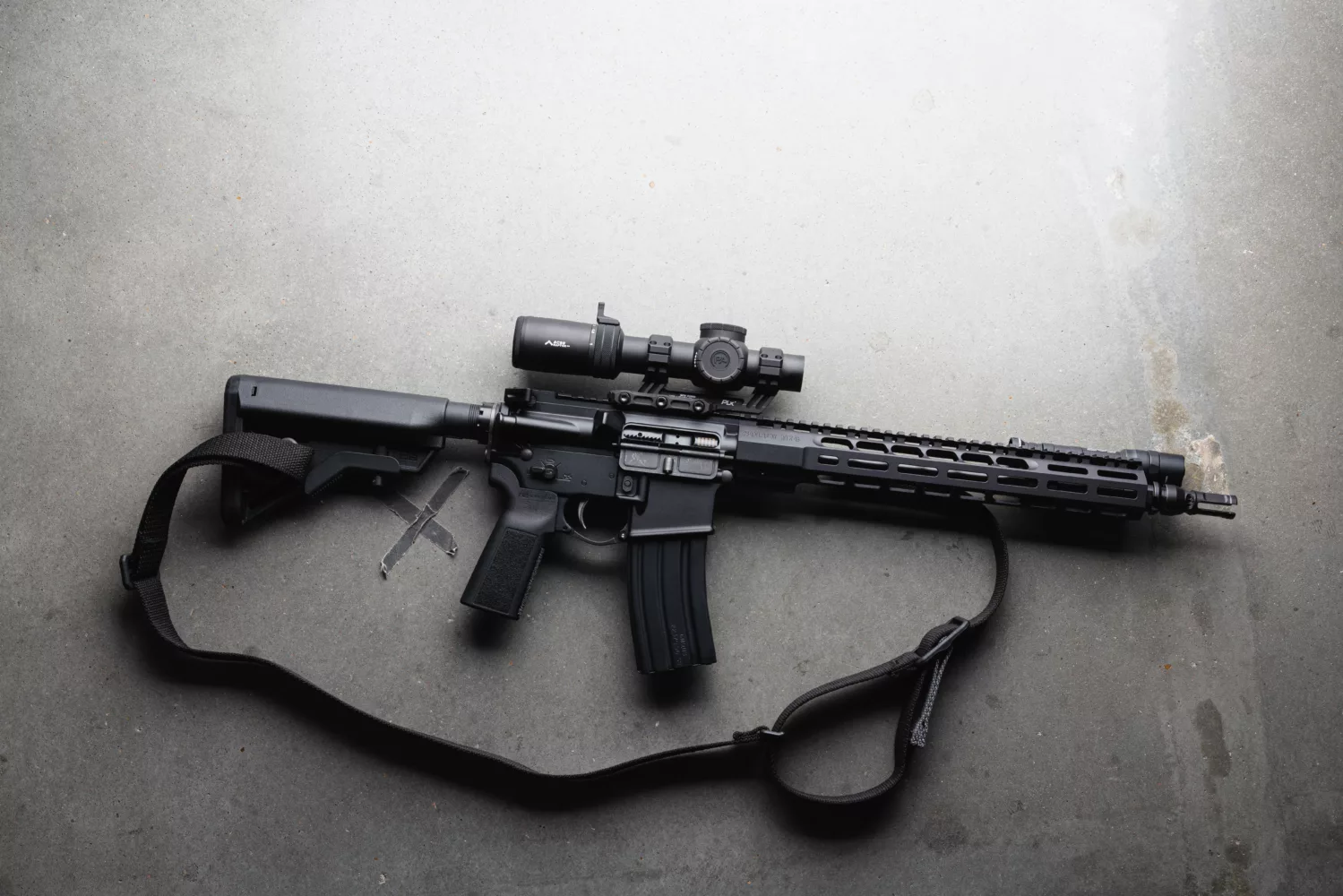
Understanding Sling Mounts
Slings can attach to an AR-15 in a few different ways, each requiring their own special mounts to be installed properly. Sling mounts are a point on your rifle where you can attach a sling. These points of contact can either be integrated into your AR-15s handguard like on most M-LOK handguards, or on other components like fixed front sight gas blocks. On some rifles, they can be built into the lower receiver, allowing for a more central mounting point, or an ideal location for a single point sling.
While most AR-15 sling mounts function similarly, there are still key differences and unique features that set each mount apart from the other.
Quick Disconnect
Quick disconnect sling mounts are designed for slings that feature a quick disconnect (QD) attachment system and are one of the most popular sling variants available. QD slings have push button swivels, making it easy to rapidly connect or disconnect a sling from your rifle. The button on the mount depresses the ball bearing system inside the sling swivel, allowing it to be pushed into place when attaching it to your rifle.
QD slings are incredibly popular and have become the standard for many militaries and law enforcement agencies. For these operators, QD sling swivels can be a life-saving feature, allowing them to quickly free themselves if their rifle gets snagged on something.
QD slings are also highly desirable for regular enthusiasts as well, as QD slings can easily be transferred between different long arms in seconds. This means you can potentially use one sling for all your favorite rifles and shotguns, without needing to purchase them all individually.
Paraclip
While QD mounts and slings are a relatively recently made mounting system for slings comparatively, paraclips or sling swivels have been in use for much longer. Paraclip sling swivel studs are reminiscent of a D-Ring, and serve as a main attachment point for the sling. While older slings mount directly to the swivel, newer paraclip slings can be attached to the swivel stud, allowing for quicker attachment and removal.
Just like their QD counterparts, paraclip slings are a very popular option. This mounting system is more common on older rifles, but with aftermarket attachments, they can still be used on modern rifles as well. Most modern handguards don’t have attachment points/studs integrated into them, but popular brands like Magpul, Arisaka, and Bravo Company, each make great mounts that can be attached to a variety of different handguard types.
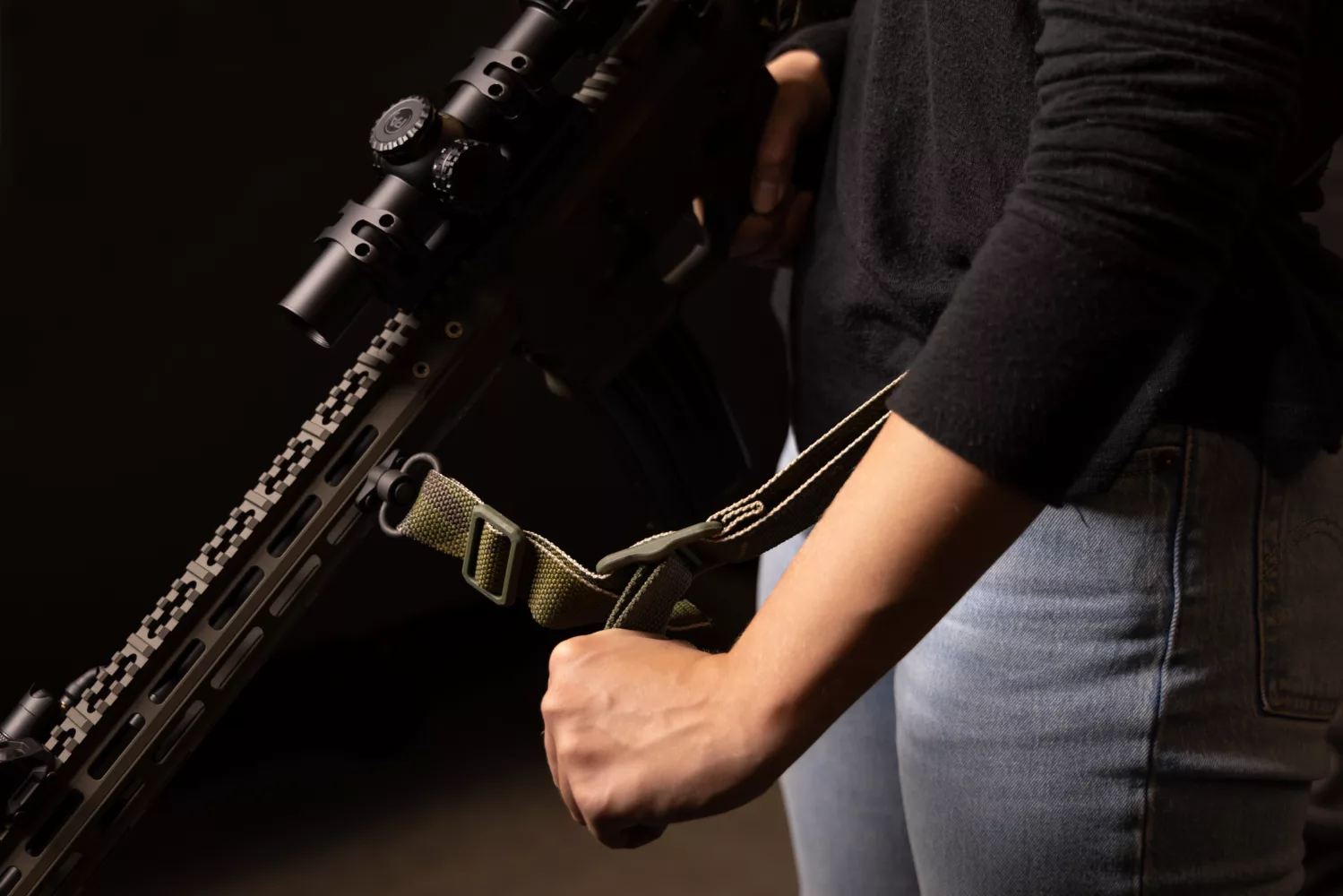
Sling Mount Positions
There are two main positions in which your sling can mount to on your rifle: the front and the rear. Whether you’ll need both mounts depends on the type of sling you plan to have on your rifle, but we’ll go over that later. For now, there are a lot of AR-15 sling mount options available. Below are our suggestions:
Front-Position Mounts
If you’re running a two-point sling, you’ll probably want to have one of your sling swivels/studs mounted towards the front of your rifle. Usually, it’s common to see enthusiasts using mounts that are just before the muzzle or by the gas block, or closer to where the handguard meets the upper receiver.
There have always been arguments as to which is better though. On one hand, having the mount sit so far can disperse the weight more evenly, but you risk the sling impeding your grip or access to other accessories. And on the other hand, a sling mounted closer to you on the handguard frees up space and gives you access to most of the rail, but your weight dispersion might be uneven. At the end of the day, try out both options and go with the one that’s most comfortable for you.
Depending on what type of handguard you run on your AR-15, there are a variety of mounts available. For quad rail handguards or picatinny top rails, the Magpul RSA QD and Paraclip mount, Midwest Industries Heavy QD mount, and the Strike Industries Ambush sling loop mount are all great options.
M-LOK handguards have a few more options, with the Magpul M-LOK QD and M-LOK Paraclip mount, Forward Controls Design QD adapter, and Bravo Company M-LOK sling mounts being some of the most popular. As we said previously, most M-LOK handguards have a sling mount integrated into it. So, an additional mount may not be necessary.
Rear-Position Mounts
Rear mounted sling swivels/studs are necessary for both a single and two-point sling setup. Just like most handguards, most stocks and high-end lower receivers have integrated sling mounts, though this isn’t the case for all of them. Fortunately, there’s a plethora of solid mounting systems that provide a solid rear mounted sling.
Most AR-15 stocks have an integrated sling mount built into them, but depending on the stock they have different mounts. For example, the A2 and mil-spec carbine stocks both have a sling loop allowing for traditional and paraclip sling usage, but it’s not possible to use a QD sling with this setup. In contrast, the Magpul MOE Carbine stock, B5 Systems Bravo stock, and BCM Gunfighter Mod 1 stock are a few examples that have built-in QD mounts.
While stocks are a great option for running slings, there are other more fixed-style mounts that work too. Endplate mounts are available that replace the mil-spec endplate with one that has either a QD or sling loop mount for paraclip slings. The Magpul ASAP QD, BCM Gunfighter QD, and Strike Industries Multi-function endplates are great options for those who want a more fixed mounting surface.
Both mounting solutions are great options, but they won’t work for every sling setup. If you plan on running a two-point sling or a two-to-one sling, the stock is going to provide you with a better fit and feel than an endplate. A single-point sling, however, benefits greatly from an endplate mount as single point slings work best when there is a strong connection towards the center of the rifle, making it the better choice for that style of sling.
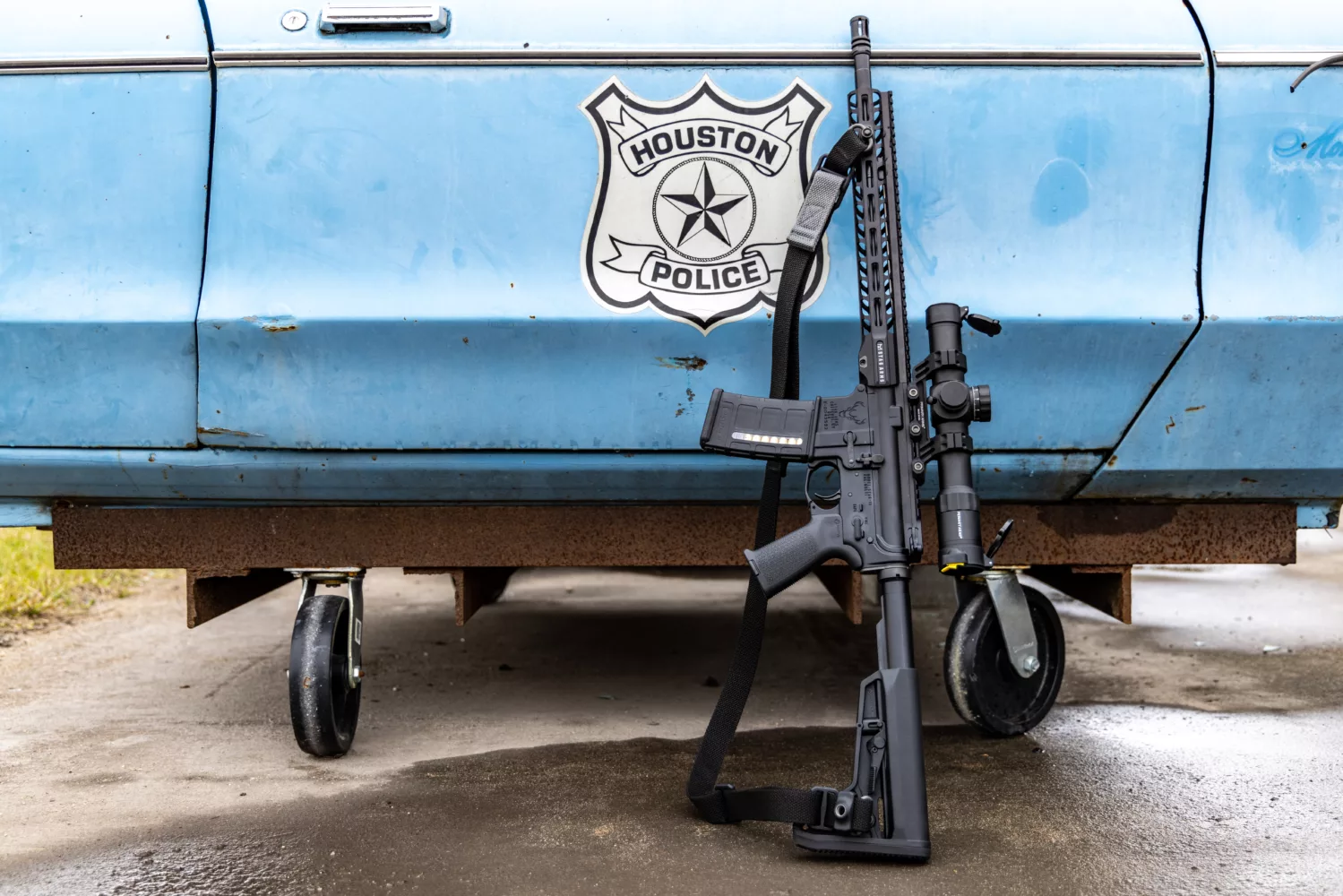
Different Sling Setups for your AR-15
Now you may be wondering what a single-point, two-point, and two-to-one sling is. These are three different sling setups you can use on your rifle. Each has its advantages and drawbacks that cater to user preferences and specific rifle configurations.
Two-Point Slings
Two-point sling setups are the standard option for most rifles. Simply put, a two-point sling is a sling that mounts at two adjacent points on your rifle, the rear, and the front. These slings are easily adjustable for different lengths and stabilize the rifle when transitioning to your sidearm. You can tighten to secure to your body when not using your rifle, and you can loosen quickly when engaging a target up close.
Most slings on the market today are two-point slings and they’re easy to set up. The rear mount of the sling attaches to the stock, while the front mounts to either the handguard, either by an integrated mount point or an aftermarket sling mount.
Two-point slings are slightly more complicated than single-points slings. Comparatively, two-point slings need to be adjusted more frequently when in use, and they require two mounting points. That said, they provide much more stability when paired with a longer rifle.
There are a lot of great manufacturers like Blue Force Gear and Forward Controls Design that make great two-point slings for the AR-15.

Single-Point Sling
Single point sling setups are preferred by many when using shorter SBRs or PDW setups. Instead of mounting to two separate points, single-point slings are similar in design to lanyards and only mount to one central point, usually at a central point like an endplate mount. They work best on rifles that don’t have a lot of room for secondary sling attachments, and they provide a greater amount of mobility to the rifle since there is only one point of contact with the sling.
They aren’t without their flaws, though. As stated before, they really work best with SBRs and PDWs. If you’re running a rifle with a longer barrel, the lack of a secondary connection may make transitions feel awkward. They also can’t be tightened closer to the body when the rifle isn’t in use. Instead, they hang to the side and can bounce around when moving. If you’re not careful, they can also swing back and hit you between the legs—a risk that leads many to choose two-point slings.
Again, you can use a single point sling with a full-length rifle, but the additional weight and length can make mobility worse and increase the effect of the aforementioned cons. Single-point slings really are best on shorter rifles and PDWs, where the lack of support is less important than close-quarters mobility.
Two-to-One Sling
A two-to-one sling is characterized by its ability to switch between a single-point and two-point sling at will. A great example is the Magpul MS4 sling. At the rear portion of the sling, there is an additional mount for the front of the sling. This allows you to use it as both a dual-point and a single-point sling.

By using a two-to-one sling, you effectively gain access to both types of slings while only needing one to do the job. For example, if you only have one rifle that’s used for a variety of purposes, you can quickly tailor your sling to each scenario to gain the benefits of either sling type.
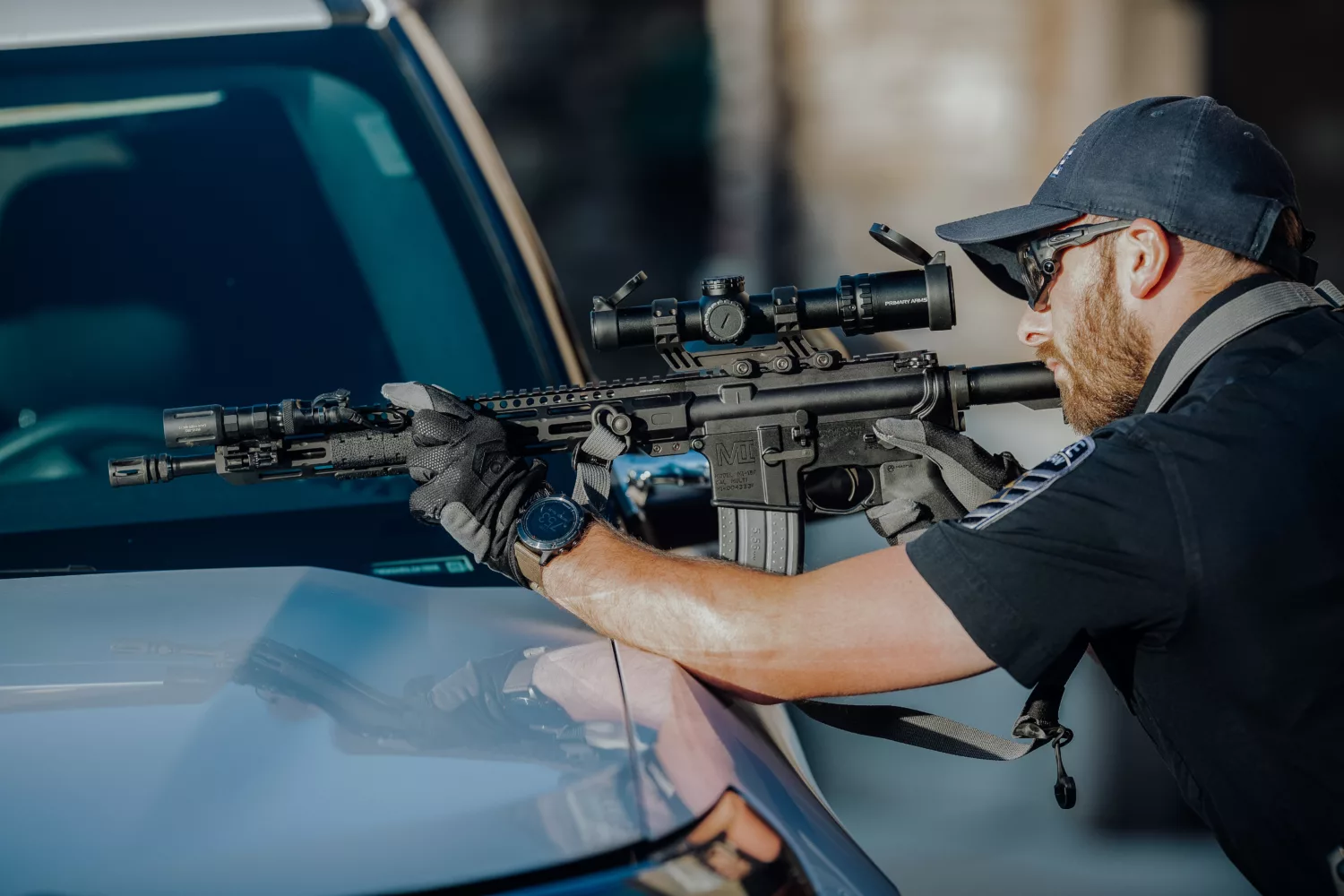
Placement and Adjustment
Regardless of which sling type you decide to use, it’s important to make sure that your sling does not interfere with your firearm’s controls.
Once your sling is attached to your rifle, do a quick function check of your rifle to make sure the sling isn’t blocking any of your rifle’s key controls. Afterward, practice your transitions from low ready to the ready position. You’ll want to look for any hangups that could hinder you in the field. If the sling feels uncomfortable at any point, it may need to be adjusted. Keep adjusting it until you find a position that’s comfortable for you. When it’s comfortable, functional, and doesn’t block anything on your rifle, you’re ready to go.
Choosing a sling can be tricky at first, luckily, we have a guide all about choosing the right sling that makes the process as simple as possible.
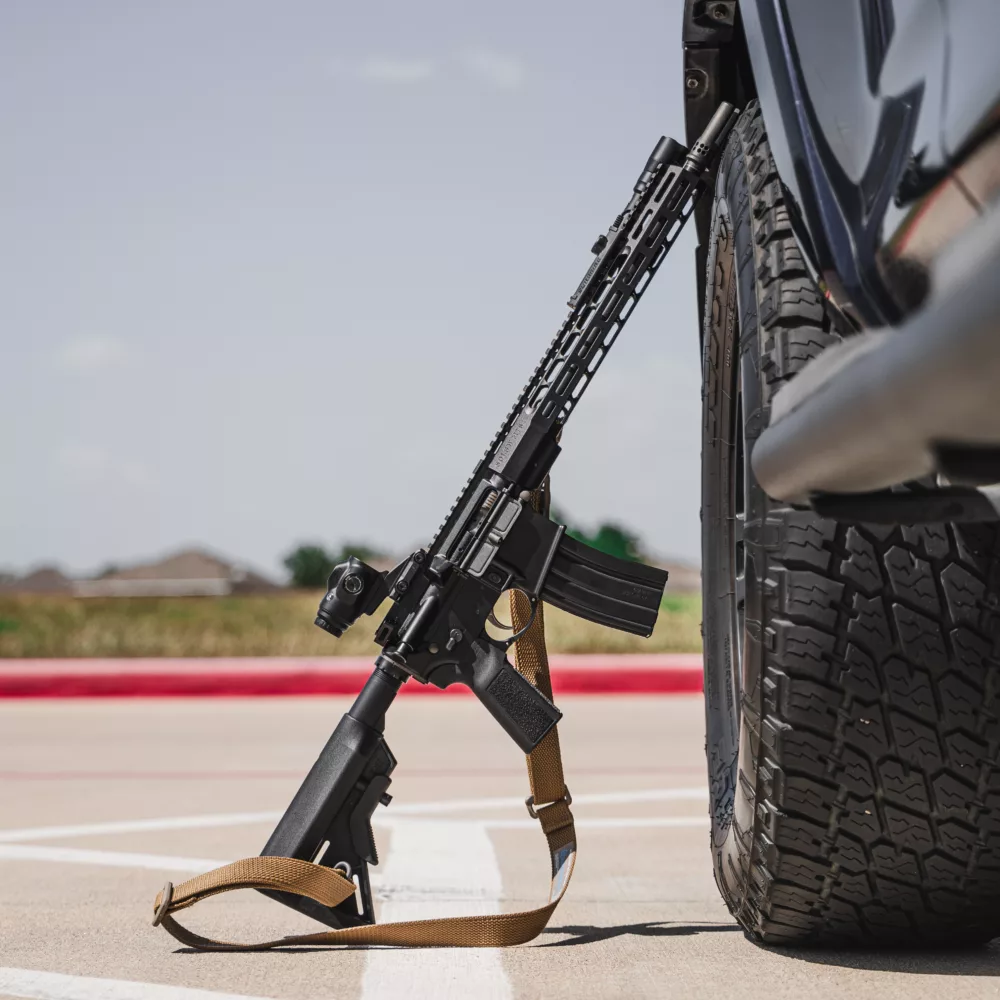
Conclusion
Slings are an incredible accessory to have your rifle, providing you with extra support and an easier way to transition from your rifle to sidearm. While not they aren’t necessary to shoot your rifle, they can do a lot to add to the experience and provide plenty of benefits.
There are a lot of different options for slings and setups. Remember, just because one set up works for someone, that doesn’t mean that it will work well for you. Blue Force Gear and Magpul slings are a great place to start; try out a few different setups and explore the options available to you.
If you add a sling to your rifle, you won’t be disappointed. Just like we said before, a good sling will go a long way.




